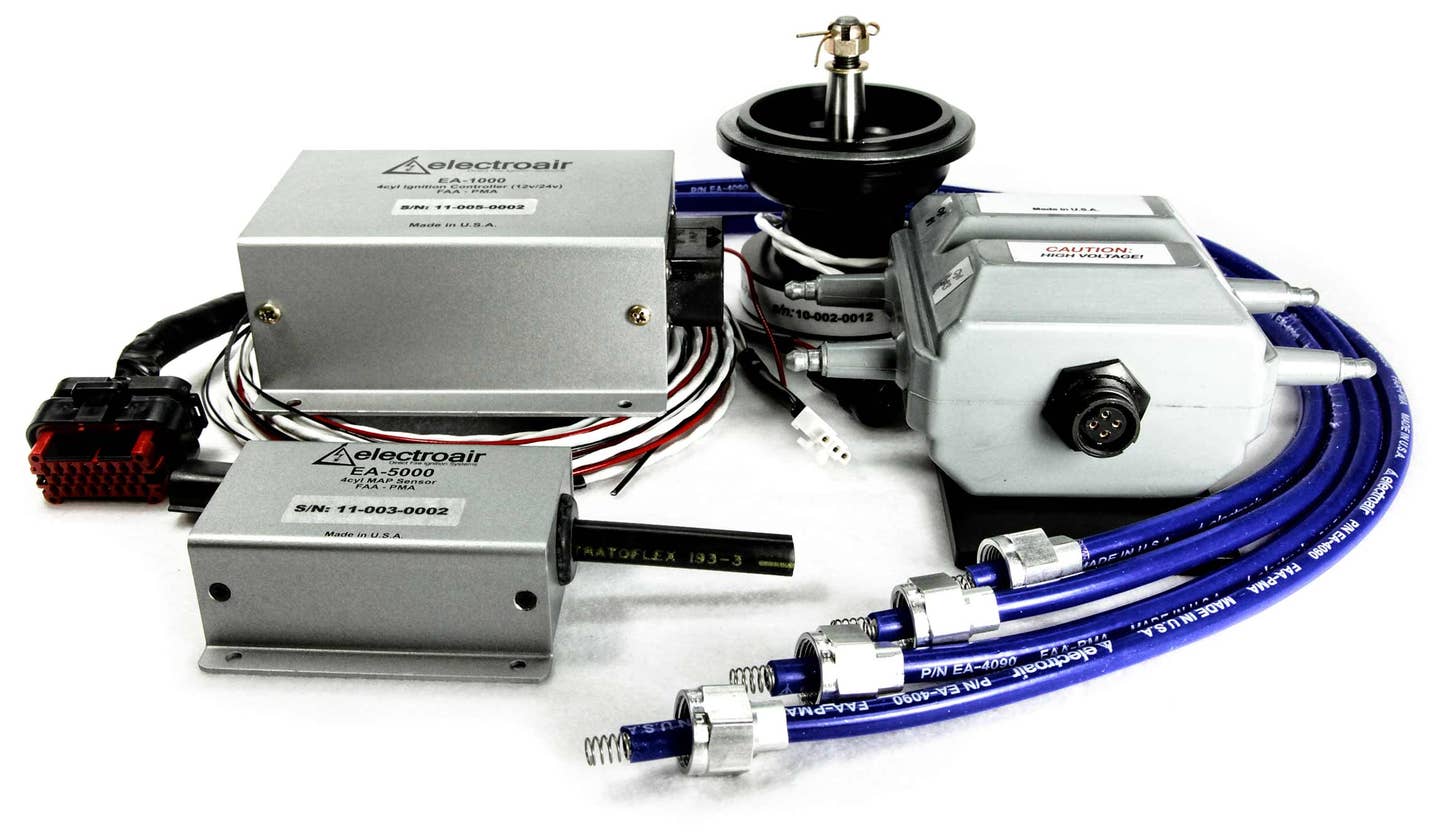

Since the introduction of the internal combustion engine, engineers and entrepreneurs alike have searched for ways to squeeze more horsepower from each gallon of fuel. Despite those efforts, the traditional two-magneto system that provides the spark for combustion in an aircraft piston engine has remained essentially unchanged since World War II. In pairs, magnetos have proved reliable when properly maintained. As mechanical devices, however, their disadvantage is many moving parts subject to failure, made worse when an engine is exposed to a wide variety of temperatures.
The simplest electronic ignition system consists of a coil pack, an ignition controller, a wiring harness, a manifold absolute pressure sensor to gauge the strength of the vacuum inside the intake manifold and a mag timing housing, which replaces a traditional magneto, to couple the ignition to the engine.
EI systems originally debuted in experimental aircraft and were created with far fewer moving parts for improved reliability. Electronic ignition can improve the operating efficiency of almost any engine because of its adaptability to the ever-changing atmosphere outside the aircraft. Traditional magneto settings don’t change once they’re set on the ground.
Because magneto settings don’t vary in flight, they can’t cope with the changing atmosphere, leading to a longer combustion burn, missing the sweet spot for achieving peak power. The efficiency issue is exacerbated by a magneto’s relatively mild 12,000- to 13,000-volt spark.
The coil in an electronic ignition system creates a more powerful spark in the 70,000- to 80,000-volt range. That allows for a larger spark-plug gap, translating into more efficient combustion.
Dual magnetos weren’t originally required with safety of flight in mind, but actually to make the large-displacement engines of the late 1930s operate. A single spark wasn’t enough to ignite the mixture inside those large combustion chambers. A second spark plug improved efficiency, but demanded a second magneto for the added spark.
Today, federal regulations demand a primary and a backup ignition source. But the regs don’t stipulate that the backup must be a magneto.
EI typically replaces just a single aircraft magneto. Replacing only one provides a significant enough improvement in efficiency that a second one is usually unnecessary.
An EI can be a blessing when starting a hot piston engine with a corrupt fuel-air mixture. The more powerful EI spark much simplifies starting.
STCs have brought the availability of EI systems beyond experimental aircraft and into aviation’s mainstream. An EI kit for a Beech Bonanza costs approximately $5,000, with labor adding another $2,000.
Electroair, a Michigan builder of electronic ignition systems, has reports from Bonanza owners who save one to two gallons of fuel per hour using the EI. Pushing the motor and the same fuel flow on the magnetoed airplane can add as much as 5 to 7 knots in cruise.

Sign-up for newsletters & special offers!
Get the latest FLYING stories & special offers delivered directly to your inbox






